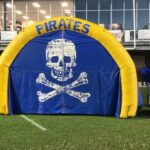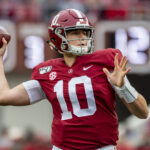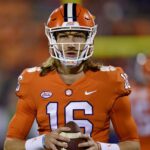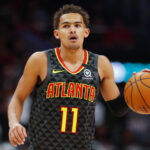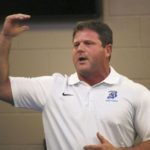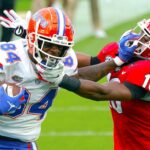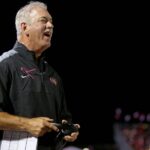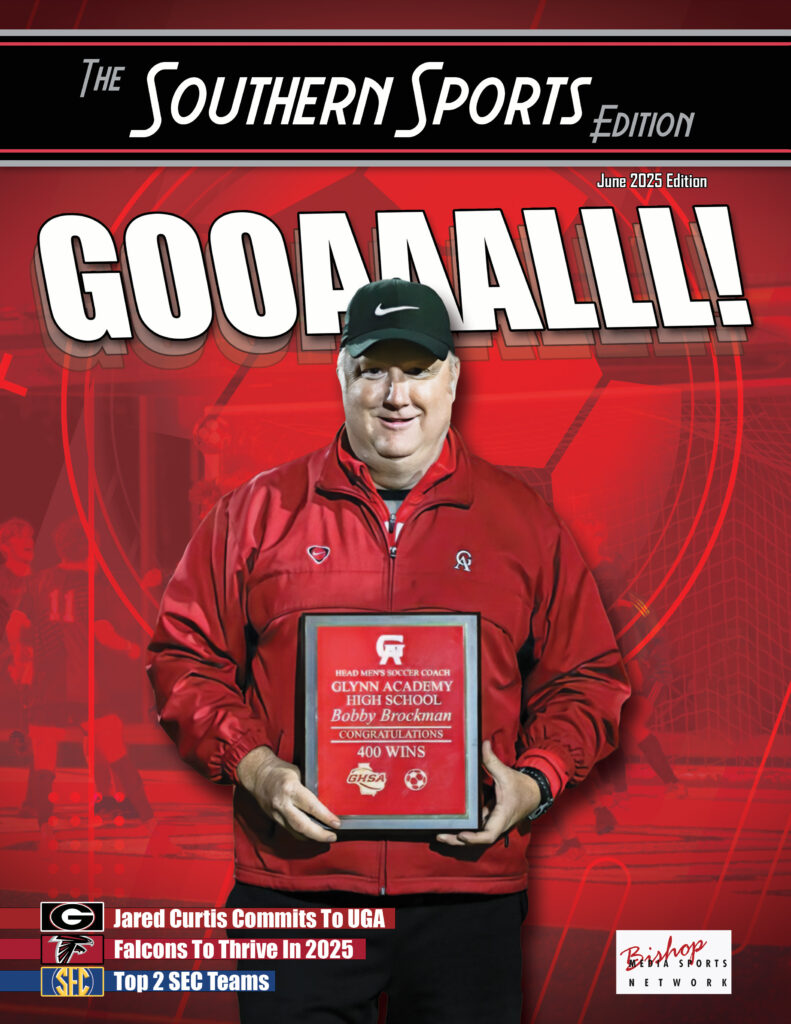Pirates Voyage
 By: Kipp Branch
By: Kipp Branch
TheSouthernSportsEdition.com news services
The Brunswick High Pirate Football team finished its season with a tough loss to Lee County in the second round of the State playoffs last week.
Brunswick finished with an 8-4 record. Head Coach Sean Pender and the Pirates won a share of the Region 2-AAAAAA crown this fall, which is something the Pirate football program has not done since 2009.
The eight-win season is something the program has not accomplished since 2010. The 2020 Pirates also won their first City Championship since 2013, and in spite of these accomplishments Sean Pender was not named the Region Coach of the year and the award went to a team and coach he defeated. 2020 strikes again. Maybe a recount should be requested.
This edition of the Pirates got off to a rocky start with a loss at Pierce County, where star running back Chukobe Hill suffered a knee injury that that kept him out of action for a month.
BHS bounced back and beat MCA in week two.
In week 3 the Pirates fumbled away a chance to beat highly thought of Benedictine deep in Cadet territory with a minute left in the contest.
After the 1-2 start the Pirates went on the road on a Thursday night and beat a good Northeast Macon team 41-12 and that began a four-game winning streak that included the “Miracle between the Bricks” 75-yard TD pass from KJ Lee to Tyrease Jones with 16 seconds left in the contest to win the City Championship.
On Halloween weekend the Pirates came up short against Richmond Hill but then won three straight before falling at Lee County last week.
The Pirates were well represented on the first team All-Region selections with the following Pirates be named to the first team:
OL- Caleb Cook
OL- Kanaya Charlton
DB: Amarion Whitfield
WR: Tyrease Jones
RB: Ree Simmons
LB: Zane Rosenbaum
Second Team Selections:
KJ Lee
Xaiver Bean
David Newbauer
Kayshawn Thomas
Kaleb Hampton
Camron Crump
Devontae Gadson
Anthony Elvine
Honorable Mention:
Kevin Thomas
Chukobe Hill
Quan Gibson
Keon Leggett
AJ Wilson
Kyle Rehberg
This Senior Class has put the program back on solid ground moving forward for the future. Coach Pender when asked about this group of seniors got a little emotional when commenting on this group:
“These kids bought into everything we were trying to teach them. They worked hard, and there was a spirit of unity with this group that has been infectious for the younger players in the program. They have laid the foundation for a winning culture here. They were the first group I have had here for all four years, and this group will always hold a special place in my heart because the foundation they created will produce results long after they will no longer walk these halls at BHS. They leave us as champions both Region and City and it has been a while since we have said that here, and now that is the expectation moving forward with this football program”.
I have enjoyed covering this team and group of seniors, and like Coach Pender stated this group has laid the foundation for the future of BHS football.
The 2020 Brunswick High Football team will always be remembered as the “Drought Breakers” on Altama Avenue and as champions and this senior class will be champions in life, and that means more than winning football games.
Striking the Pose
 By: Robert Craft
By: Robert Craft
TheSouthernSportsEdition.com news services
The Heisman race is narrowing down to a two-man race, but it’s tightening up at the same time heading into the final week before conference championship games begin.
Mac Jones and Kyle Trask have separated themselves from the pack, but players like Desmond Ridder, (QB, Cincinnati) Najee Harris, (RB, Alabama) Zach Wilson, (QB, BYU) Trevor Lawrence, (QB, Clemson) Justin Fields, (QB, Ohio State) Jaret Patterson, (RB, Buffalo) and Breece Hall, (RB, Iowa State) have made major impacts in the 2020 season.
The Heisman trophy went to the best player in college football once upon a time. Today, the Heisman goes to the top quarterback on any winning team.
Last year at this time, Joe Burrow was being announced as the 2019 Heisman trophy winner after putting up early-gen PlayStation stats.
Burrow completed 402 passes for 5,617 yards and 60 touchdowns in 15 games. He also threw 44 touchdowns in the regular season.
The two front runners in this year’s Heisman race will have only played 10 regular season games, and only against SEC teams.
The voting deadline has been moved back to December 21st with finalists announced on Christmas Eve.
For the first time, voters will judge a Heisman winner on his conference championship game. That game being the SEC Championship in Atlanta on December 19th.
Mac Jones runs the Alabama offense at an exceptionally high level while putting up crazy numbers in the process. Against LSU, Jones completed 20-28 passes for 385 yards with 4 touchdowns and no interceptions.
Now that gives the first-year starter over 3,100 yards passing with 27 touchdowns and only three interceptions. It obviously helps having a stacked offense including DeVonta Smith and Najee Harris, but Jones puts throws on the money and is a tough quarterback to stop.
Kyle Trask has brought the Fun & Gun back to Gainesville. Trask has no problem chucking the ball around without much of a running game.
Trask’s ability to make smart decisions and avoid mistakes helps make that a winning formula for the Gators offense.
As absurd as it may sound, Trask is on a better scoring pace and on the same yardage pace as last year’s Heisman Trophy winner Joe Burrow. Trask ignited the Heisman talk by leading the Gators victory of Georgia Bulldogs 44-28.
Trask was 30-43 for 474 yards passing 4 touchdowns and a pick. Trask’s ability to place the ball where only his teammate can make the catch is amazing.
That’s how good the Gators quarterback has been with over 3,200 yards and 38 touchdowns with only 3 interceptions with the season finale against LSU this Saturday.
The Heisman race might come down to the SEC Championship game in a couple weeks, but barring a complete drop off from Kyle Trask against LSU, it’s hard to imagine Jones catching Trask in this race.
One question to all my readers, if you took both quarterbacks off their respective teams, which team would be affected more?
Do You Really Care
 By: JJ Lanier
By: JJ Lanier
TheSouthernSportsEdition.com news services
If you had asked me back in September if I thought there would still be a college football season in December, I would’ve told you you’d be more likely to see a Fresh Prince of Bel-Air reunion with the original Aunt Viv.
The fact we are not only playing football in December, but it looks like most bowl games and the college playoffs are going to take place, is nothing short of remarkable.
Considering the difficulties, we all knew the NCAA would encounter to put any semblance of a season together, I think they’ve done an admirable job, overall.
They put together strict guidelines in regards to testing players and coaches multiple times a week, as well the protocols in place for those who tested positive.
They allowed programs to have the autonomy to cancel and reschedule games as they saw fit, which led to some interesting matchups, like Coastal Carolina and BYU, that we otherwise never would’ve gotten.
Still, for all those reasons I just gave the NCAA credit for, I have never been less interested, or watched fewer games than I have this year.
It’s been difficult getting excited for games where I had no idea what type of roster was actually going to be on the field or if the game was even going to be played at all.
It’s also been hard to care about the outcomes of games and how it affects bowl games and the college playoffs when there’s such a disparity in the number of games played.
The most difficult part has probably been the testing. While I applaud the NCAA’s testing requirements there’s something wrong when college kids can be tested three times a week, simply because they’re an athlete, while thousands of Americans wait in line 3-4 hours to get tested.
In many cases, they have to use sick or vacation time for work while they wait on the results because they are in quarantine.
I know it’s an apples to oranges comparison when it comes to the cost or type of tests being administered (public vs private) but I have to seriously doubt the motives of anyone who doesn’t admit the optics on that are bad.
When you take into account the billions of dollars to be made, or probably more important, to be lost, if there wasn’t a season, I completely understand why the NCAA proceeded with football and continues with basketball.
I just wonder for all those fans that were clamoring at the beginning of the season how much they needed sports so there could be some resemblance of normalcy in their daily lives, did it provide the escape they hoped for?
I, for one, felt that way two months ago, but my perspective has changed entirely since then.
Please understand this isn’t some sort of political statement on my behalf. I’m not arguing whether or not a season should have been played or advocating for any particular side.
The NCAA was in a no win situation and I give them credit for trying to make the best of it.
All I’m giving is my opinion on why my interest in caring about this season has basically been nonexistent.
Unless it was a topic I was going to write about, when given the choice to watch a football game or something else, I chose the latter.
After watching Aunt Viv be reunited with Will Smith, I have no regrets.
Increasing Altitude
 By: TJ Hartnett
By: TJ Hartnett
TheSouthernSportsEdition.com news services
Because nothing can be anything resembling normalcy can exist anymore, the NBA is releasing the schedule for the upcoming 2020-2021 season in two parts – the first chunk covers the starts of the season (right around the corner, on December 22nd) to March 4th, at which they’ll have the All-Star Break.
The remaining schedule will be released at a later time. Ideally, they’ll still get in a full season of 72 games before the playoffs start on May 18th.
However, the big change will be who they play. Each team will play the teams in their own conference three times and will double the usual amount of games against teams from the opposing conferences (from 15 to 30).
There are some extra complexities mixed up in there, but instead of dwelling on those, let’s look at how the announced schedule plays out for the Atlanta Hawks.
The beginning of the schedule, including just four games in December and 16 in January, could be a difficult proving ground for Atlanta.
They’ve got the Memphis Grizzlies, who are just getting started, and the Brooklyn Nets, with whom Kevin Durant and Kyrie Irving like to hang out, as half of those December games.
After that, they’ve got two more against the Nets, a road game in Milwaukee, and a trip out west that could be a major challenge.
Those could be backbreaking, but the Hawks certainly have the chance to win at least some of those and then there’s games at the Cavs, the Hornets, the Knicks, the Pistons, and the Timberwolves that Atlanta should have good showings against.
February is going to likely be even more of a challenge. That’s when the Lakers show up, as well as the Mavericks, the Celtics, and the Heat.
That’s all bad pretty news. While the Hawks could upset some of those better teams, that difficult stretch makes it all the more important that Atlanta takes care of business against the teams that they are, in turn, better than.
There’s barely any March schedule to talk about, so that rough February is going to wind down into an All-Star Break that will be well-earned.
How the rest of the year shakes out is yet to be determined, but if the Hawks can play up to the level they expect of themselves, they’ll be in good position.
January really stands out as a month that could swing either way and one in which the Hawks really need to get off to a good start.
There are winnable games to start, and if they can come away with victories, then I think that momentum could help carry them through the tougher games that will pop up as the month progresses.
February is going to be a difficult month regardless of how January goes, so if the Hawks want to make a run towards the playoffs (and they do), the first month of the season is going make or break them.
The Hawks have the potential to be one of – if not the – most improved teams in the NBA this season. This season – or the first half of it anyway – is actually going to help earn that rep, so long as they can win more games than they lose. They don’t need to dominate, just win the games they should and a handful of the ones they could.
If they can pull that off and continue it into whatever the second half looks like they’ll have a great chance of returning to the playoffs for the first time since the 2016-2017 season.
Pirate Pride
 By: Kipp Branch
By: Kipp Branch
TheSouthernSportsEdition.com news services
I was on the search committee four years ago that recommended the hiring of Sean Pender as the 8th Head Football Coach in the history of Brunswick High School dating back to 1968 when the football program began.
One thing that jumped out in the process was that Sean Pender came to the interview with an already developed Brunswick High Pirates Leadership Training Manual that blew away the selection committee, and the passion in which he discussed leadership ultimately landed him the BHS job.
For this story in Sean Pender’s own words is his vision for the BHS program he has built over the past four years:
“The vision of our program is clear and simple. We want to create a championship mindset. We not only want to win State Championships but we want to be champions in life. We will set an expectation of excellence. Our goals will be set high and we will formulate a plan to achieve our desired goals. All members of our team will play vital roles in our mission. We want the members of the football program to graduate with the following skills:
To look people in the eye when talking to them.
To speak about things that matter.
To commit to something and actually stick with it.
To work hard for goals that they set for themselves.
To become a good teammate who works with multiple changing personalities on an ongoing basis and makes all work together.
To receive coaching and then give mentorship once it is learned.
To learn how to win, how to handle a loss, and how to move forward with a positive take away (Learning opportunity, stay strong).
To understand how to deal with pressure with clarity of mind.
To learn the value of delayed gratification.
To appreciate structure and understand its value.
These are real skills that student athletes can take with them when they are in real situations in life.
These qualities will help them become better community members, husbands, and fathers.
Our program will not exclude students from having the opportunity to be a part of the team. All student-athletes will have the opportunity to learn.
It is our belief that good coaches give encouragement. This program will not be built strictly on motivation and hype, but rather it will be built on empowerment.
Motivation, by itself, might get us through a practice or a situation, but empowering will give us the belief that we can be something more.
Empowering our program will get everyone involved to continue the work when it becomes the grind.
We will be the type of coaches that tells all team members that they are the reason we are winners. We will provide encouragement and the opportunity for encouragement.
We will learn to fight for what we love, to belong to something bigger than self, and to work with diversity.
It is our goal to not only build championship caliber student-athletes, but to also build our team to become champions in life. So, our students can grow up to be productive adults excelling in a competitive global environment.”
The character word for this week and pretty much the season has been unity. You see a unity walk every week when the Pirates arrive at the venue they are playing in.
The kids love their coaches, and the coaches love these kids. In the context of 2020 you read, hear and see all sorts of negativity in the world.
If you want to see great things happening with young people go observe the BHS football program where young men are being developed to lead for the future.
As for the results the Brunswick High Pirates take on Lee County in the second round of the State Playoffs.
The blueprint has turned into a City and Co-Region Championship this season. The 8-3 Pirates are a very good football team; something that began with character development.
The Pender Way is the right way for Brunswick High Football. The best is still to come.
The Best
 By: Robert Craft
By: Robert Craft
TheSouthernSportsEdition.com news services
When Kyle Pitts took a brutal hit from Georgia safety Lewis Cine, many speculated that his football career at Florida was over.
Talking heads in college and pro football stated it was in Pitts best interest to opt out the remainder of the season to prepare for the NFL draft.
The impact from the hit by Cine left Pitts with a fractured nose.
Pitts was cleared to play two weeks ago against Vanderbilt, but Coach Mullen decided not to allow him to travel with the team to Nashville.
Sidelined for two weeks, Pitts made an immediate impact in the contest Saturday against Kentucky.
On the first drive of the game, Pitts twisted Kentucky cornerback Kelvin Joseph into a pretzel for a 56-yard touchdown catch.
Pitts was back in full swing and added a two-yard slant route for his second touchdown. Then capped off the day with a fake slant and out for his third touchdown.
Prior to the game Kelvin Joseph was quoted “I feel like the biggest challenge to Pitts is going to be facing me and my teammates.”
J.J. Weaver stated, “Kyle Pitts is most definitely going to see me this Saturday. We’ve just got to be more physical than him.”
Pitts wasn’t opting out and he wasn’t going to let Joseph get the last laugh. Pitts rocked the baby and Kentucky’s defense.
Kyle Pitts has become the best tight end and maybe the best offensive weapon in today’s college football.
In six games, Pitts has 29 receptions for 513 yards and 11 touchdowns. He has more touchdown receptions than all of Tennessee and Florida State have touchdown passes.
Pitts is the perfect example of a player utilizing his length and size correctly. He maximizes his build with innate body control, ball tracking ability, high-point timing, and sheer strength at the catching point.
In the red zone against 6 foot 2 cornerback Tyson Campbell (future NFL 1st round pick), it wasn’t just size that made the difference, but the fact that Pitts leaped up for his balls and secured them with total authority.
Coming into the 2020 season, there was a clear-cut top 3 of the 2021 NFL Draft tight ends: Penn State’s Pat Frieermuth, Miami’s Brevin Jordan and Pitts. As of today, Pitts has gained access to this tight end group.
Truthfully, Pitts is an absurd athlete. He stands 6 foot 6, 246 pounds, but he moves with the explosiveness of an outside wide receiver. He has become a defensive coordinator’s nightmare.
Most mock drafts have Pitts going in the top 10 and the first tight end off the board.
Plenty of NFL teams have a need for a player like Pitts, but creative offensive minds would have a field day sifting through the mismatches that Pitts provides.
Before the NFL Draft 2021, Pitts still has a few games left as a Florida Gator. Gator and college football fans can enjoy the Kyle to Kyle combo for just a little longer.
No Sting For Tech?
 By: Kenneth Harrison
By: Kenneth Harrison
TheSouthernSportsEdition.com news services
Geoff Collins is only in his second season at Georgia Tech. It may be too early to say if he was the right hire, but we can check his progress.
As you know he replaced Paul Johnson, who was there for 11 years. He was famous for being the only Power 5 team to run the triple option.
Collins runs a spread offense, so he has a completely different style. Many of the kids on the roster do not have the skillset for that offense.
Johnson was also notorious for not recruiting well. Collins is trying to improve the overall talent on the roster.
Tech’s 2020 recruiting class was ranked 27th nationally and fifth in the ACC.
There were four 4-star recruits in that class. They include quarterback Jeff Sims, running back Jahmyr Gibbs, corner back Miles Brooks and defensive end Jared Ivey.
The 2022 class is currently ranked 32nd and they have two 4-star players in the class. Obviously, it’s not set in stone until signing day so this can change.
Anytime you see Collins he talks about changing the culture and the 404 (Atlanta’s first area code). I’ll be honest, I think it would be better if he spoke more about the game of football.
It seems like he has more style than substance because of that but what do I know.
Let’s take a look at his on-field results. His record at Tech is 6 – 14.
In his first season in 2019 he was 3 – 9 and 2 – 6 in conference play.
He was not expected to have instant success. One score I want to mention so we can compare it to this season is the Clemson game. Last season in Death Valley the Tigers won 52 – 14.
This season they played Clemson at home in the fifth game of the season.
They were steamrolled 73 – 7. I was alarmed by that score because it made me think, how was your team better last season?
In year 2 there should be better talent and more experience playing in your system. I probably oversimplified his progress by just looking at that game.
The Yellow Jackets are 3 – 5 so far in 2020. All three wins are in conference play, so they have more ACC wins than they did last season.
Also, we have to admit during this pandemic that this year is more difficult than normal circumstances.
Speaking of that, Georgia Tech just played their first game after an unexpected four-week layoff. I think this game may have been the turning point for Collins.
They beat Duke 56 – 33 at home. The true freshmen played well. Gibbs had touchdown runs of 61 and 26 yards in the first half before leaving with a hamstring injury.
Sims threw for 3 touchdown passes and ran for 108 yards, setting career highs. Jordan Mason ran for 105 yards.
Three players earned ACC honors after the game. Defensive end Jordan Domineck was named defensive lineman of the week. He had 2 sacks and 2.5 tackles for loss. He had a strip sack in the end zone and recovered the ball for a touchdown.
Sims was rookie of the week and offensive lineman Zach Quinney was co-offensive lineman of the week.
My opinion on Collins has changed and I think he has the team on the right track. He needs one or two more recruiting classes and a normal offseason to get things back on track.
Wildcat Roar
 By: Jason Bishop
By: Jason Bishop
TheSouthernSportsEdition.com news services
It was a very straining year for the Camden County Wildcats. It was a year full of ups and downs and year that saw Camden decimated with injuries.
Overall, the Wildcats finished the season with a 5-6 record.
Camden opened up at home against the Richmond Hill Wildcats. Camden struggled mightily on offensive and Richmond Hill pulled away, beating the Wildcats 28-11.
The second game of the season went a little better for Camden as they stopped the high-powered rushing attack of the Glynn Academy Red Terrors for a 31-14 win. This started a 4-game winning streak for Camden.
In that streak they beat the Raines Vikings 35-26 on the road, the defending state champion Marietta Blue Devils at Chris Gilman 24-21, and notched a road win against the Oakleaf Knights 25-12.
The tide quickly turned as the injuries continued to mount for Camden and the Wildcats would lose the next three games.
The Coffee County Trojans came to Kingsland and beat the Wildcats in convincing fashion, 37-13.
Then Camden took to the road to play the Warner Robins Demons in a game where the Wildcats were vastly out-manned and put on a running clock in the 4th quarter. Camden lost this game 43-7 and scored on the last play of the game to avoid being shutout. This was, most certainly, the low point of the season.
It did not get any easier for the Wildcats the following game as they traveled to Moultrie to take on the Colquitt County Packers, who were ranked #3 in the state at the time. Despite a valiant effort in the first half, the depleted Camden County Wildcats went down 34-13.
The losing streak ended the following week as Camden manhandled the Tift County Blue Devils 35-14 to notch their first region win and guarantee them a #3 seed at worst.
The following week Camden took to the road to Valdosta to play the Lowndes County Vikings with a #2 seed on the line.
Most did around the state did not expect this game to be close, but with the Wildcats beginning to get healthy they went toe to toe with the Vikings. Lowndes held off Camden in the end for a 28-21 victory.
This ended the regular season for the Wildcats with a 5-5 record. Camden earned their way into the playoffs and took to Atlanta to take on the Parkview Panthers, who were the #2 seed from region 4-7A.
Camden struggled again on offense for the first 3 quarters of the game and fell behind 17-0 in that span. The defense kept the Wildcats in that football making critical stop after critical stop to keep them in the football game.
Camden dominated the 4th quarter and came all the way back to force overtime 17-17.
Parkview would prevail in overtime 24-17 to end Camden’s season.
What we saw for most of the year was a team that was under-manned due to injuries and then a very good football team once the team finally started getting healthy. Evidenced by blowing out Tift, playing Lowndes tough to the end and giving Parkview all they wanted.
We will see what the 2021 season brings to Kingsland.
Loading The Nest
 By: JJ Lanier
By: JJ Lanier
TheSouthernSportsEdition.com news services
You can tell a lot about where an NBA franchise thinks they are with how they approach their free agency.
Do they sign long-term max deals to players that they want to have around for a while?
Is their approach to sign guys they believe will be able to help push them over the edge and get them into the NBA finals?
Do they even participate in it at all?
The Hawks may not be on the cusp of the NBA finals, but they’re free agent signings announced to the rest of the league, and I imagine to their head coach as well, that anything less than a playoff appearance will be unacceptable.
With the young talent on Atlanta’s roster I think most people believed the organization would target veteran players they could sign for two years at a reasonable salary to help those younger players mature a little quicker; basically, what they did with Rajon Rondo. I don’t think anyone expected them to be nearly as aggressive as they were.
Even if you weren’t a bit surprised when Atlanta signed Danilo Gallinari to a 3-year contact for just north of $61 million, I imagine the most ardent Hawks supporter didn’t see them signing Bogdan Bogdanovic at 4 years/$72 million.
Don’t get me wrong, I’m not saying either of those signings were bad, just not the moves most people were expecting Atlanta to make.
None of the four free agents Atlanta has added (yes, I’m including Kris Dunn) were brought in to merely be placeholders, bridging the gap until guys like De’Andre Hunter, Cam Reddish, and Kevin Huerter are ready to take the reins.
They were brought in to not only make the Hawks competitive, but as a signal to those young players that their learning curve just dwindled; it’s time to take that next step and they better be ready for it.
In the matter of a week the Atlanta Hawks went from a team not good enough to play in the bubble, which is like not being good enough to get a participation trophy, to being a team that could cause problems for others in the playoffs.
Which leads me to Lloyd Pierce, who is about to enter his third year as the Hawks head coach with immensely more pressure on him than he had a few weeks ago.
I imagine the next 8-9 months for Pierce will be like watching Metallica’s “Enter Sandman” music video on a continuous loop.
The good news for the soon to be on the hot heat coach (if he doesn’t already begin the season there) is that he has a lot of different lineup options he’ll be able to fall back on, giving him an opportunity to be creative with his substitutions.
If we’re being realistic, the best case scenario for Atlanta is a second place finish in the Southeast behind Miami and a favorable first round matchup as a five or six seed.
There is the slight possibility their season could turn out even better, but I imagine that would have to do with other teams struggling more than Atlanta having success.
Regardless, this should be the best season the team has had in the past four or five years.
It’s playoffs or bust for the Atlanta Hawks, or at least that’s what their free agent signings indicate.
Arming Up
 By: Kipp Branch
By: Kipp Branch
TheSouthernSportsEdition.com news services
The Braves have signed their second veteran starter this offseason, announcing that they’ve agreed to a one-year pact with right-hander Charlie Morton.
The contract will pay Morton a guaranteed $15M for the 2021 season.
Morton joins southpaw Drew Smyly, who inked a one-year deal worth $11M earlier in the offseason, as two new faces who’ll round out the Braves’ rotation behind Mike Soroka, Max Fried and Ian Anderson.
The addition of Morton and Smyly likely pushes Kyle Wright out of the Atlanta rotation, and likely back to Triple A Gwinnett to start the 2021 season.
Sean Newcomb, Bryse Wilson, Touki Toussaint, Huascar Ynoa, Tucker Davidson, Patrick Weigel and Jasseel De La Cruz don’t really have a shot at being part of the rotation going into the 2021 season.
Soroka is still recovering from his season ending Achilles injury may need some extra time to recover, and may not be available to start the season in April.
The Braves have quality arms on the roster and in the farm system they could part ways with some of those arms to build up other areas of the roster.
Morton is 37 years old and a short-term fit but he should bolster the Braves’ rotation.
He’s 47-18 with a 3.34 ERA, 1.16 WHIP and 10.6 K/9 in the past four seasons.
The only four starting pitchers in baseball over that span who’ve matched Morton’s ERA, WHIP and K/9 in as many innings are Jacob deGrom, Gerrit Cole, Max Scherzer and Justin Verlander.
Morton has also been a solid in the playoffs something the Braves will need in the short term as this team is a World Series contender.
Morton and Smyly make the Braves the favorites again in the NL East and maybe the National League in 2021. The Dodgers are still the team to beat and the Braves are right there nipping at their heels.
This will be Morton’s second stint with the Braves. The Atlanta Braves selected Morton in the third round with the 95th overall selection of the 2002 Major League Baseball draft.
The Braves added Morton to their 40-man roster on November 20, 2007. Morton made his major league debut on June 14, 2008.
On June 3, 2009, the Braves traded Morton with Gorkys Hernández and Jeff Locke to the Pittsburgh Pirates in exchange for Nate McLouth. Any Braves fan remember that trade?
I think adding a veteran like Morton to this rotation makes the Braves a much better team. It is a short-term fix for a team that can win a world championship next season, and a great bargain for $15M.
It is also cheaper than the failed Cole Hamels experiment from 2020 that provided no ROI.
Biggest question now for Atlanta is will the National League adopt the designated hitter rule permanently in 2021 so they can resign Marcell Qzuna?
If they can’t the Braves are going to have to package some of those arms listed above in a package to sign another power hitter to insert in the lineup.
I’m still not sure about third base for the Braves also. I feel like the Braves need to address that position this off season.
With the signing of Morton, the Braves will have one of the top rotations in MLB.
